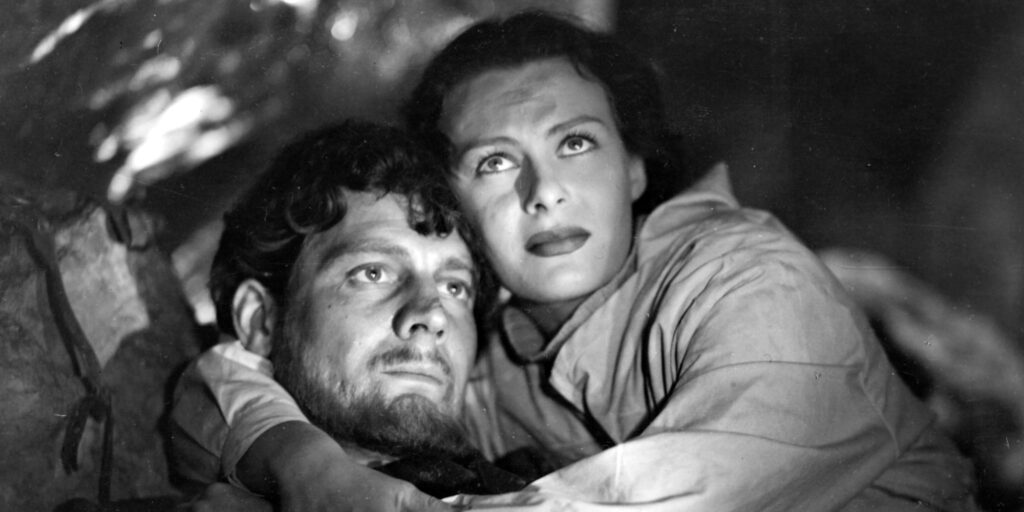Dark Heimat

Hans Deppe’s 1950 Schwarzwaldmädel (The Black Forest Girl) and 1951 Grün ist die Heide (The Heath Is Green) are commonly discussed as the beginning of early Federal Republic of Germany cinema’s Heimatfilm craze. In some ways this is understandable: Schwarzwaldmädel was one of the first locally crafted massive box-office successes, as well as the first colour fiction feature produced in FRG. The Heimatfilm dominated FRG and Austrian cinema for five or six years before the wave ebbed out and started to mutate into other genres – the foreground, we could say, became a background. In its heyday and long after, the genre was vilified by critics as the epitome of brainless entertainment with a deeply reactionary core. It is only recently that this view has started to change, if slowly – the Heimatfilm is certainly a more complicated subject than traditional film history would have us believe. Beyond the borders of the German-speaking world, the Heimatfilm is barely known, as in contrast to other FRG and Austrian genre productions, it proved difficult to export. These general remarks provide necessary groundwork for this programme, which looks at a corpus of films rarely discussed in FRG and Austrian film histories: works made slightly before and parallel to the Heimatfilm wave’s beginnings, which are mostly set in the same Alpine surroundings but are completely different in tone and attitude from the cinema born out of Deppe’s fine craftsmanship and commercial smarts. If Schwarzwaldmädel is carried by the optimism of a young nation on the economic rise, then films such as Josef von Báky’s exercise in Heimat horror, Die seltsame Geschichte des Brandner Kaspar (1949), talk about a deep-seated fear of the future, in the same way that Richard Häussler’s fine piece of heritage noir, Die Martinsklause (1951), addresses the subject of migration and refugees in much darker hues than eg Grün ist die Heide. One especially remarkable film is Harald Reinl’s debut feature Bergkristall (1949), whose experiments with elements of documentary realism were rarely embraced by other directors. In Austria, Karl Kurzmayer and Wilfried Fraß used surprising flashes of Expressionism in their sole feature as a duo, Die Sonnhofbäuerin (1948), made quasi-independently, far from the centre of local film production, while in Die Frau am Weg (1948) Eduard von Borsody made statements about Austria’s collective guilt that were unutterable for a long time afterwards.
Curated by Olaf Möller


